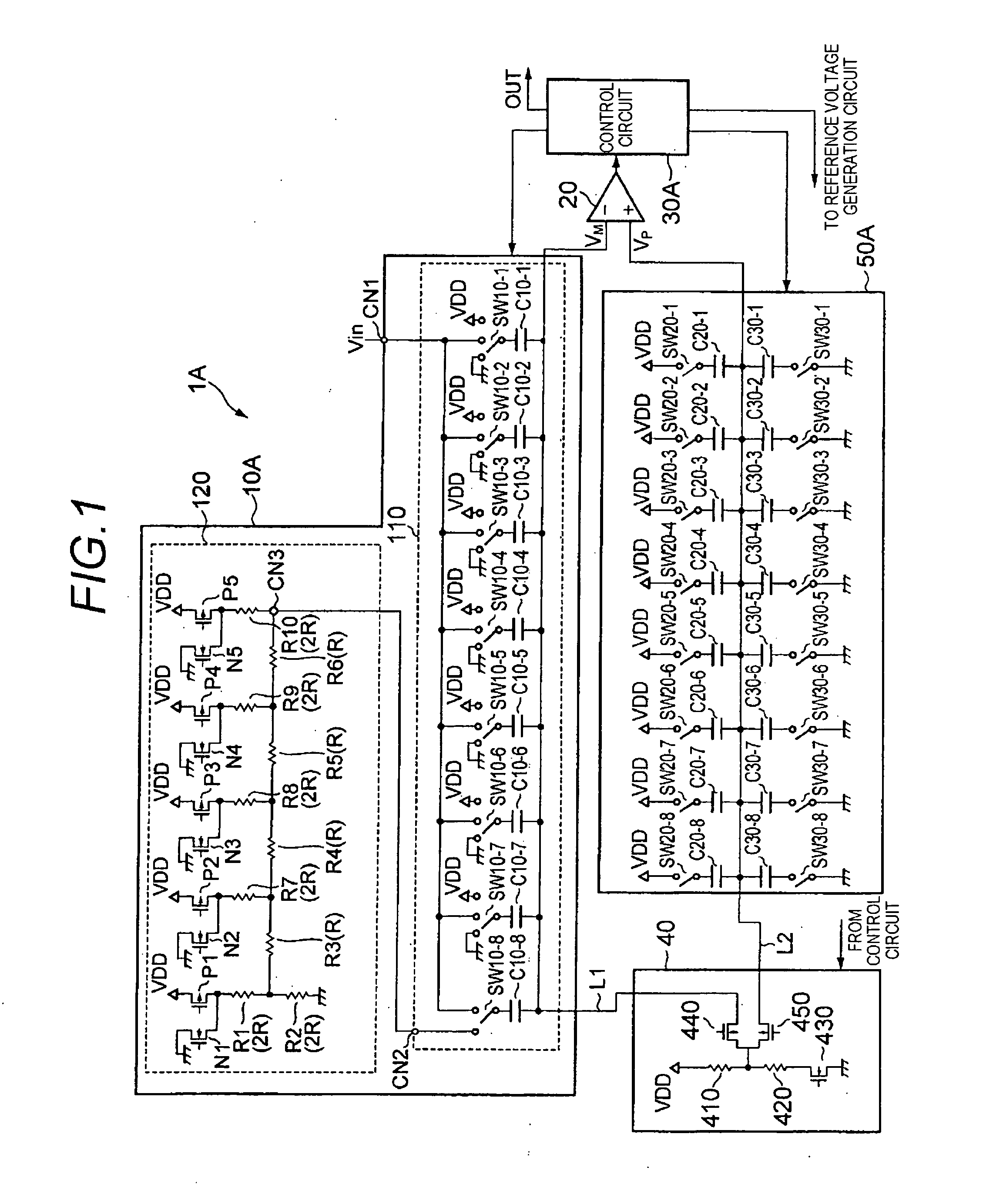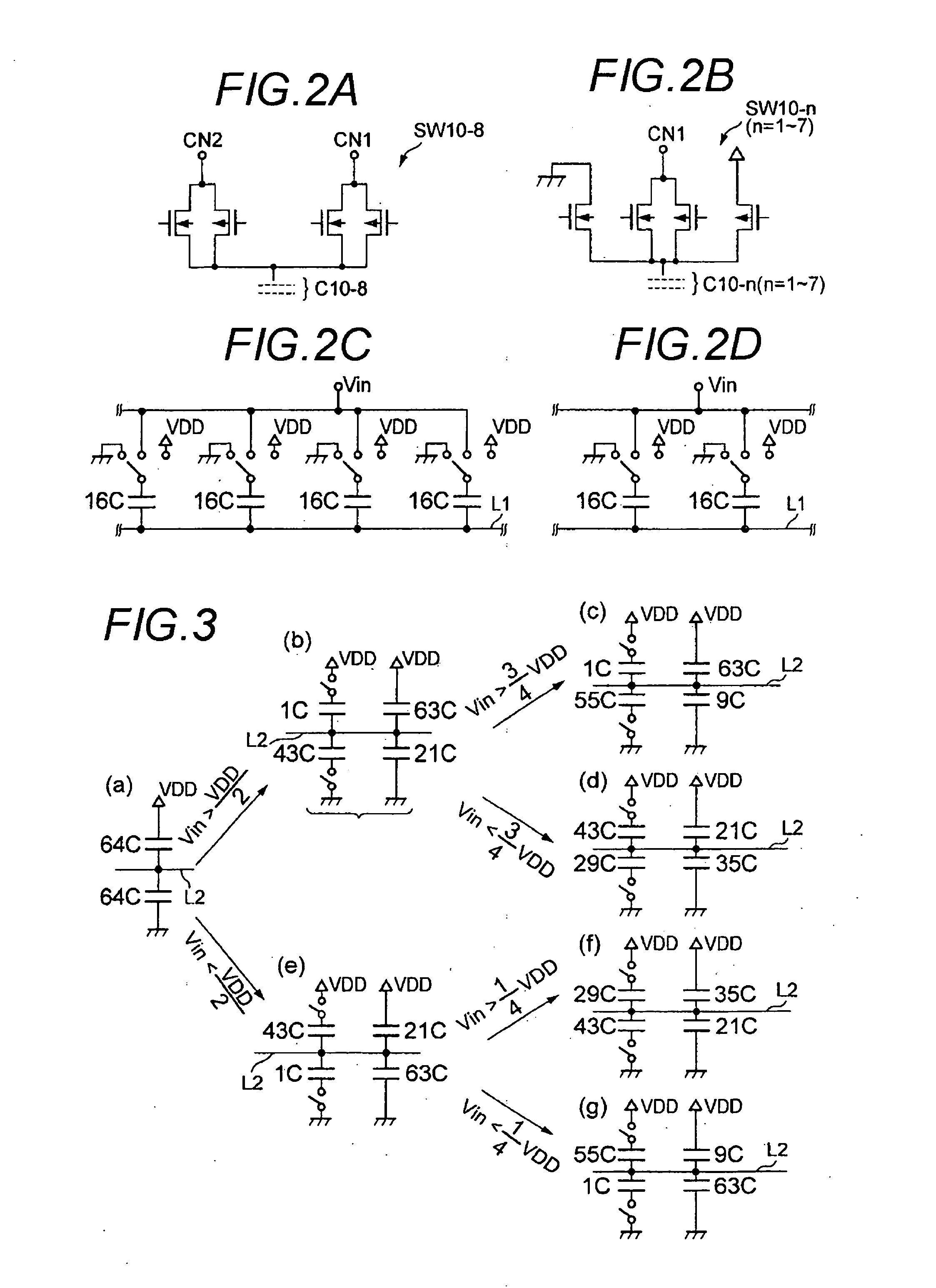Successive aproximation A/D Converter
a converter and approximation technology, applied in the field of a/d converters, can solve the problems of general difficulty, inability to determine the magnitude relationship between the comparison target voltage and the input analog voltage v/sub>in /sub>, and the conversion accuracy decreases. the effect of simplifying the configuration
- Summary
- Abstract
- Description
- Claims
- Application Information
AI Technical Summary
Benefits of technology
Problems solved by technology
Method used
Image
Examples
first embodiment
A: First Embodiment
[0027]FIG. 1 is a block diagram showing a configuration example of an A / D converter 1A according to a first embodiment of the present invention.
[0028]The A / D converter 1A is a successive approximation A / D converter that converts an input analog voltage Vin to 12-bit digital data OUT and outputs the data OUT. As shown in FIG. 1, the A / D converter 1A includes a local D / A converter circuit 10A, a comparator 20, a control circuit 30A, a reference voltage generation circuit 40, and a reference voltage adjustment circuit 50A.
[0029]The function and configuration of the reference voltage generation circuit 40 are basically the same as those of a conventional successive approximation A / D converter (see FIG. 5). As shown in FIG. 1, the reference voltage generation circuit 40 is a voltage divider circuit in which resistors 410 and 420 and an N-channel field-effect transistor 430 are disposed in series between a high potential power supply that outputs a positive voltage VDD ...
PUM
 Login to View More
Login to View More Abstract
Description
Claims
Application Information
 Login to View More
Login to View More - R&D
- Intellectual Property
- Life Sciences
- Materials
- Tech Scout
- Unparalleled Data Quality
- Higher Quality Content
- 60% Fewer Hallucinations
Browse by: Latest US Patents, China's latest patents, Technical Efficacy Thesaurus, Application Domain, Technology Topic, Popular Technical Reports.
© 2025 PatSnap. All rights reserved.Legal|Privacy policy|Modern Slavery Act Transparency Statement|Sitemap|About US| Contact US: help@patsnap.com



